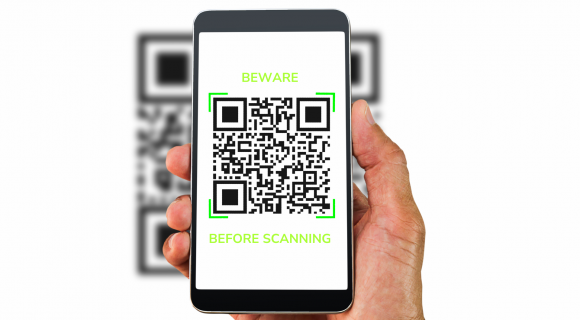In an age where convenience often takes precedence, QR codes have become ubiquitous, simplifying tasks from accessing menus in restaurants to making payments. However, this convenience also brings with it a latest cybersecurity threat: Qishing. This term, a portmanteau of “QR code” and “phishing,” describes the method by which cybercriminals use QR codes to deceive individuals into visiting malicious sites or inadvertently downloading malware. It is the latest en vogue tool for cybercriminals.
Understanding Qishing
Qishing exploits the QR code’s inherent nature – a quick and easy way to access content with minimal effort. Cybercriminals embed malicious links into QR codes, which, when scanned, can lead to fraudulent websites, initiate downloads of malware, or even trick users into divulging sensitive personal information.
Why Qishing is Effective
- Convenience Over Caution: QR codes are designed for convenience, which can lead to users letting their guard down.
- Opaque Nature: Unlike traditional URLs, you can’t see where a QR code will lead until you scan it.
- Versatility: QR codes are used in a wide range of applications, making them a prime target for exploitation.
Spotting Qishing Attempts
Identifying a malicious QR code by sight is impossible, but there are signs and precautionary measures to consider:
- Physical Tampering: Be wary of QR codes that appear to be stickers or placed in unusual locations.
- Context is Key: If a QR code appears in a strange or unexpected context, it’s best to avoid scanning it.
- Use Trusted Sources: Only scan QR codes from reputable sources or established businesses.
Best Practices for Avoiding Qishing
- Verify Before Scanning: If you’re unsure about a QR code, verify its legitimacy with the source.
- Use Secure QR Scanners: Some QR scanning apps offer security features that check the safety of the link before opening it.
- Keep Devices Updated: Ensure your mobile devices are up-to-date with the latest security patches.
- Educate and Inform: Regularly educate yourself and your team about the latest cybersecurity threats.
- Use Multi-factor Authentication: MFA will give you another layer of security to protect your data.
What to Do If You Fall Victim to Qishing
- Disconnect: If you suspect you’ve scanned a malicious QR code, disconnect your device from the internet.
- Notify Your IT Team: Immediately notify your IT team of the suspected breach.
- Change Passwords: If you’ve entered personal information, change your passwords immediately.
- Monitor Your Accounts: Keep a close eye on your bank statements and credit reports for unusual activity.
The Role of Businesses in Combating Qishing
Businesses that use QR codes must ensure they’re implementing them safely. This means:
- Regularly verifying that the QR codes are tamper-free.
- Informing customers about the correct use and expected behavior of their QR codes.
- Being transparent about what their QR codes do and where they lead.
Qishing is a reminder that with technological advancement comes new forms of cyber threats. By staying vigilant and informed, both you and your business can mitigate the risks associated with this modern-day deception. The key is to balance the convenience of QR codes with the necessary caution to protect personal and sensitive information.

